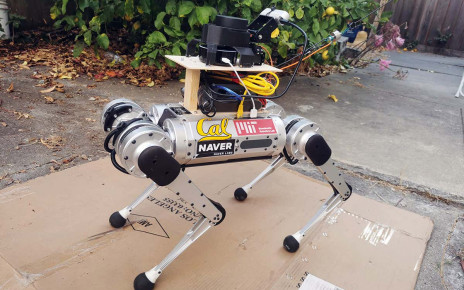[ad_1]

An illustration of the pasta-shaped robot, which moves in response to an external sound field
Yong Deng
Sound can propel a microscopic robot shaped like a piece of pasta through artificial blood vessels, which could eventually lead to a new way of delivering drugs inside the human body.
You can feel the sound from a large speaker in your body because the mechanical vibrations of the sound waves penetrate organic tissue. Daniel Ahmed at the Swiss Federal Institute of Technology in Zürich and his colleagues want to use this phenomenon to move a tiny robot inside the human body.
The robot looks like a 350-micrometre-long piece of corkscrew-shaped rotini pasta – a design that Ahmed says was inspired by the shape of certain bacteria. The researchers 3D-printed it from a non-toxic polymer suitable for use inside the human body. The robot does not have any motors or internal power source. However, researchers could make it move forward in a spinning motion through a narrow glass tube filled with water or isopropyl alcohol by using a centimetre-sized device called a transducer to bathe it with sound.
This happened because the sound made the molecules in the liquid hit the robot’s spirals and form vortices around its helical body, propelling it forward. This is, in effect, like a tinier and more complex version of airplanes getting lift from air vortices beneath their wings.
The researchers could change the direction of the robot’s motion by altering the frequency of the sound. Furthermore, with sound frequencies around 15 kHz, the robot could move forward even if the tube was angled upwards at 45 degrees, spiralling uphill.
Jie Yin at North Carolina State University, who was not involved in the research, says that using sound may be more convenient for making tiny robots move than some of the alternatives, like using magnets. “This robot has high potential for applications in medicine like drug delivery, but further studies on how to load and unload drugs to target areas remain to be explored,” he says.
With some tweaks to the microrobot’s shape and more transducers to control its path of travel, it may possibly navigate blood vessels inside the body, says Ahmad. He says that his team is developing an “acoustic helmet” that could be used to move and control helical microrobots inserted into blood vessels in the brain.
Topics:
[ad_2]
Source link




